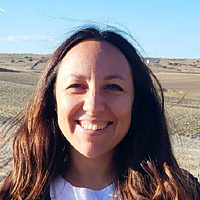
Solar panels, livestock and plants can live well side by side.
Agrivoltaics: Combining solar panels and agriculture into a win-win result
Solar plants are space-intensive and can sometimes compete for land which would otherwise be used for other purposes. In several countries, attempts are now being made to combine agriculture with solar energy. Statkraft is planning such projects in both Italy and the Netherlands.
One might think that solar parks would be best suited in dry and sunny environments, such as in a desert, but this is not the case. The solar cells work better with some humidity, and typical agricultural areas are best suited. However, these are areas that are already under great pressure, which creates a conflict of interest between the production of food and the production of energy.
So, why not combine agriculture with solar panels in the same area? It's not a new idea. Agrivoltaics (also known as agrophotovoltaics, agri solar or agri-PV), has been discussed for decades, but it’s only in recent years that it has become highly relevant to develop projects on a larger scale.
The world needs more renewable energy, and solar energy is undoubtedly one of the largest parts of the solution, not least in countries with a lot of sun throughout the year

Battle for land
"Combining solar energy with agriculture seems like a very sensible idea, especially in a country where competition for land is fierce," says Martijn van der Pouw, business developer in Statkraft Netherlands.
The Netherlands is an example of a country where the need for new renewable energy is great, but access to available space for solar parks is small due to competition for land.
"Agri-PV can resolve the land conflict between renewable energy production and agricultural production," says van der Pouw. He emphasises that the primary use of the land in agri-PV plants should always be agriculture, while energy production is integrated in the farming practice.
"There are several solar parks where sheep graze between the panels, but this is not what we in The Netherlands would normally consider agrivoltaic combination use. It's just an easy way for greenkeeping. In an agrivoltaic project, the goal is to produce high-quality fodder, vegetables, berries, or fruits, while also producing energy.
Usually, the dual use will reduce both agricultural production and energy production compared to the use of the same land for one or the other.
"A general goal is that agricultural production should be at least 70 per cent of what it was before the solar panels were installed," says Martijn van der Pouw.
“Now, if the solar installation in the agri-PV system also produces 70 per cent of what it would have produced in a standard solar power plant without agricultural use, the area is effectively 140 percent used compared to either agricultural or solar power.”
For the farmer who rents out their land for power generation, that could be good news. In addition to the return from agriculture, they will also receive income from power generation. This can both stabilise and increase income flow.

Martijn van der Pouw
Martijn van der Pouw is a business developer and works on developing solar power projects for Statkraft in the Netherlands, based in 's-Hertogenbosch.

Costanza Rizzo
Costanza Rizzo works with the development of solar power projects for Statkraft in Italy, based in Milan.

Solar power plays an increasingly important role in the global energy system, and solar power is now the fastest growing source of energy in the world. Statkraft develops and owns solar power plants and is constantly looking for new opportunities to expand the business.
Social sustainability
If we are to gain support for projects like this, it is important to be able to show the added value this has locally, both economically and socially. No one wants solar panels in the field if it doesn't bring any gains. One element, of course, is increased local energy production, which can provide farmers with increased and more stable incomes, while electrification can make agricultural production more sustainable.
"At the same time, projects must be useful not only for farmers, but for the entire local community," says Costanza Rizzo. Development and operation can create local jobs but contribute to social sustainability for projects.
"It could be creating spaces inside the agrivoltaic parks accessible to local communities, like bike paths, walking areas or space for educational activities for children with the objective to make local communities the real owner of our projects," says Rizzo.
"Many areas in southern Italy lack resources and investments that have a strong social impact. It is important that we show that we are not only looking for a quick win, but that we are a responsible player with a long-term perspective that can help create a sustainable future for the local community."

Related content

Borders wind farm proposal set to boost Scottish energy security
The Scottish Borders could soon be on course to help secure Scotland’s energy future through a more efficient way of generating clean electricity, by using fewer turbines to maximise the efficiency of...
Read more

Grid Services: Innovative solutions to stabilise our electricity system
Statkraft are market leaders in delivering innovative projects that ensure the reliability of our electricity supply. We explain why grid stability is crucial in the transition to a net zero electrici...
Read more

Greening the grid: how solar developers can broaden their ESG footprint
Following the UK Solar Summit event earlier this month, the news platform Solar Power Portal asked us to write a piece on the work we’re doing to maximise biodiversity gain at our solar projects. This...
Read more

Statkraft explores potential for new solar development in West Cornwall
Statkraft, Europe’s largest renewable power generator, is progressing proposals for a new solar development in Gwinear, east of Hayle, in West Cornwall.
Read more